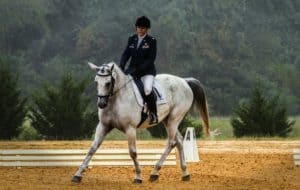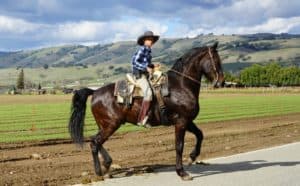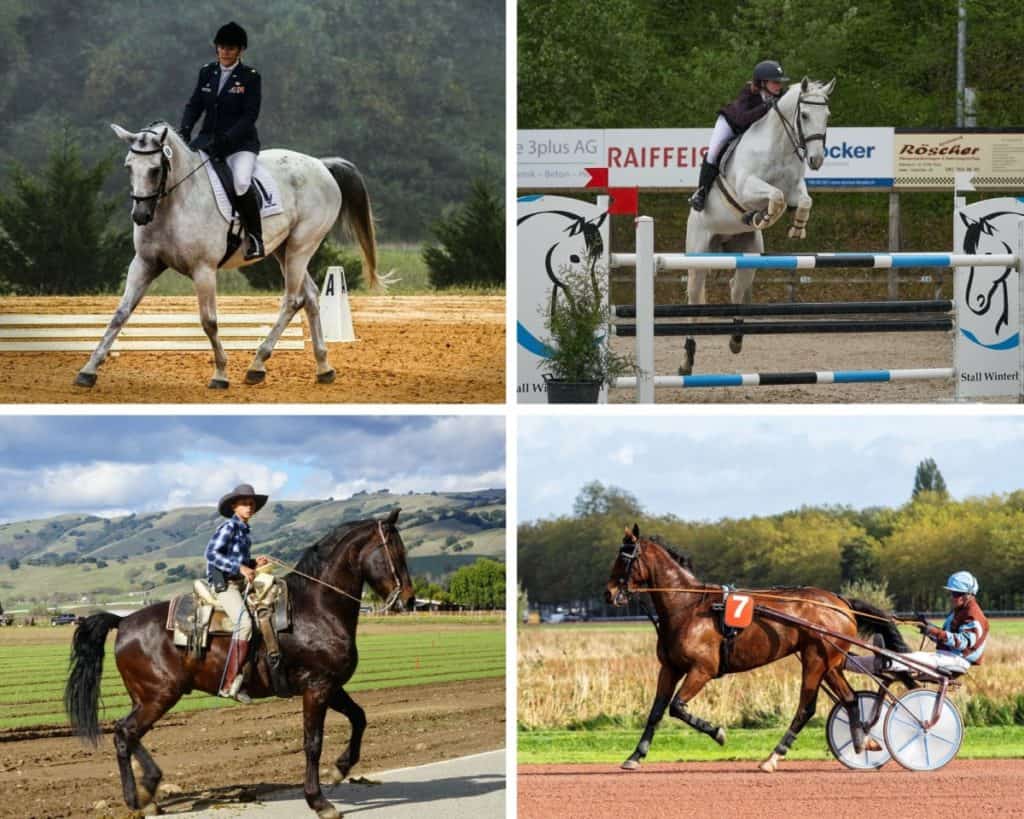
While some argue that horse riding is not even a sport, there are certainly a plethora of horseback riding disciplines to choose from. Some are Olympic Sports and other more informal disciplines. To the uninitiated, it can get confusing – and frankly, when researching this article, we learned SO many new things and discovered disciplines we hadn’t even heard of! Stay tuned for a complete run-down of the largest equine disciplines around.
English Style Disciplines
- Dressage
- Para-equestrian Dressage
- Show Jumping
- Cross Country
- Eventing
Western Style Riding Disciplines
- Western Dressage
- Reining
- Barrel Racing
Other Disciplines
Team disciplines
- Polo (Western and regular)
- Horseball
Driving
- Combined driving
- Para-equestrian Driving
Racing
- Flat racing with
- Harness racing
- Skijoring
Endurance
Vaulting
Gymkhana
English versus Western Style Horse Riding
Before we get into specific disciplines, we need to distinguish between Western and English styles as horse riding disciplines fall into one of these categories. These differ in a few ways; the tack, the way the reins are held and used, the rider gear and attire as well as the jargon and gaits. You can see some of these differences in the photos below and for more details on these differences, this is a great article to refer to.
English Style Riding Disciplines
Dressage

Dressage is an Olympic Sport governed by the FEI (International Federation for Equestrian Sports). Equestrian sports are actually the only ones where women and men compete in the same events. In dressage, a horse and rider are judged based on the form, obedience, suppleness, and balance of the horse as well as how well the pair executes the movements in the program.
There are progressive difficulty levels in dressage ranging from programs that include just walk, trot and stops, to Grand Prix level where complex movements such as piaffes and pirouettes are incorporated. Each sequence of movements is graded by a panel of judges (or just one for lower-level competitions).
If you are getting ready for your next horse show, don’t miss How to Prepare Yourself and the Horse for a Dressage Show.
Para-equestrian Dressage
Para-Dressage is dressage for people with physical handicaps and forms part of the Paralympics and is also governed by the FEI. When competing, para-riders are grouped according to their functional abilities to ensure fair competition between pairs, otherwise, the ground rules, judging, and programs are the same as for classical dressage.
Show Jumping
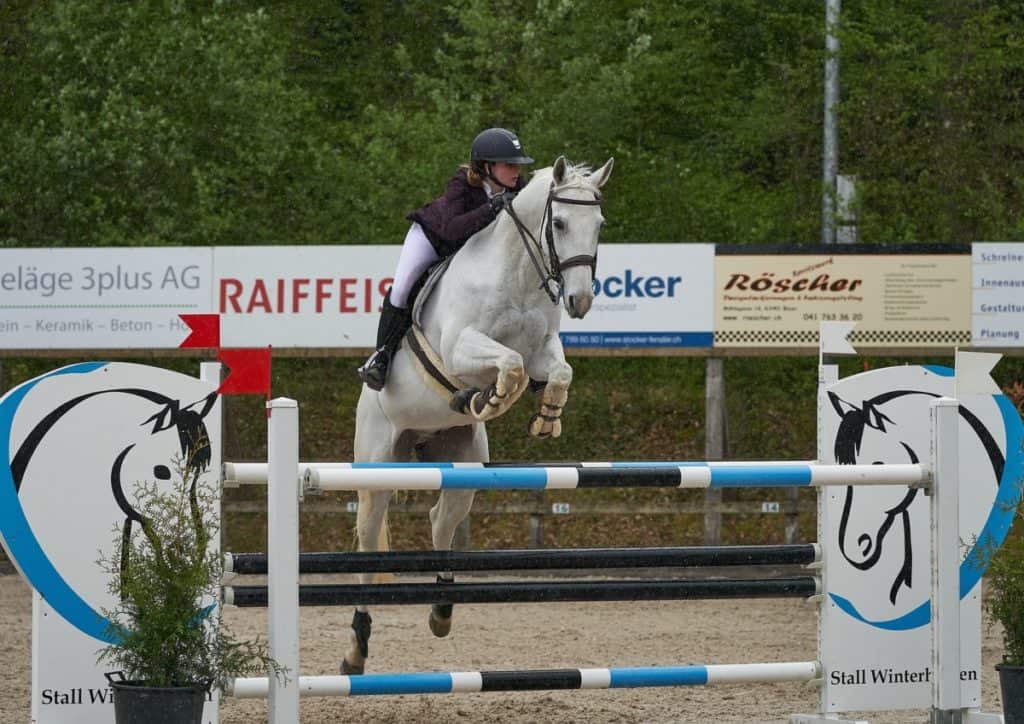
Also, an Olympic Sport governed by FEI, show jumping is when a horse and rider jump fences made up of lightweight rails in an arena. The difficulty rises with the increasing height of the obstacles, but also with the complexity of the layout of the obstacle course as well as the width, shape and make of the obstacles themselves. Abrupt turns, for instance, demand great flexibility and obedience of the horse and brightly colored or oddly shaped obstacles can be potentially intimidating to the horse. Riders get penalty points for any rails that are knocked down during the round, any refusals (where the horse stops before an obstacle) and for exceeding the optimum time. Show jumping is run both as individual and team events at an international level.
Cross Country
This is a very physically demanding discipline for both horse and rider and is performed in a gallop. Cross country involves an up to 4 miles long course in varied terrain with fixed fences as well as natural obstacles like sandbanks, ponds, and deep ditches. Penalties are given for refusals and when a rider exceeds the optimal time for the course. This is also one of the most accident-prone equestrian sports due to the fixed nature of the fences, which sometimes cause horses to stumble and riders to fall off at high speeds.
To experience a cross country obstacle course from a riders’ perspective, have a look at this cool video:
Eventing
Eventing is in many ways an equestrian trilithon and is the third and final Olympic Sport in the horse riding domain. It is usually a 3 or 4-day competition that combines all the three disciplines described above; dressage, cross-country and show jumping. Each discipline has one day allocated to it and the different competitions are designed to test the horse and rider on endurance, speed, precision, teamwork and lots more. A single horse and rider must compete in all disciplines throughout the event. Riders accumulate penalty points throughout the competition and the winner is the one with the lowest combined score at the end of the 3 days.
Western Style Riding Disciplines
Western Dressage
Western Dressage bears many similarities to classic English dressage. The measurements of the arena are the same, the judging happens in the same manner and the overall goal is to display the obedience, balance and suppleness of the horse as well as a good interplay between horse and rider. However, Western riding has different tack and bit and the rider outfit is in line with the Western style. Western dressage also focuses more on movements and exercises that are important for a Western working horse. A western rider can use one or both hands to hold the reins but is required to stick with his or her choice throughout a program. The gait in Western dressage (and in general) is also different from English as the horse will jog instead of trot and lope instead of galop. The jog and lope are slightly slower gaits that are smoother and more comfortable to sit for the rider than the trot and canter.
Below is a great video showing English and Western dressage side-by-side.
Reining
Reining has its roots at the cattle-ranch and is a display of the moves required from good cattle horses to do their work. They need to be responsive, fast and nimble in order for the ranger to move, herd and sort cattle. Competitive reining programs are completed in a lope, take place in an arena and consist of movements such as slow and fast circles, 360-degree spins and sliding stops. The sport was recognized in 2000 and is governed by FEI.
Barrel Racing
Barrel racing is a rodeo discipline where three barrels are placed in a clover pattern in an arena and the horse and rider need to ride around all three in as short an amount of time as possible. While the premise is simple, the execution demands both strength and speed from the horse and the interplay between horse and rider needs to be perfect to round the barrels as close as possible to limit the time, but not so close it tips the barrel (which gives a time penalty). Barrel riding can be done both individually and in teams.
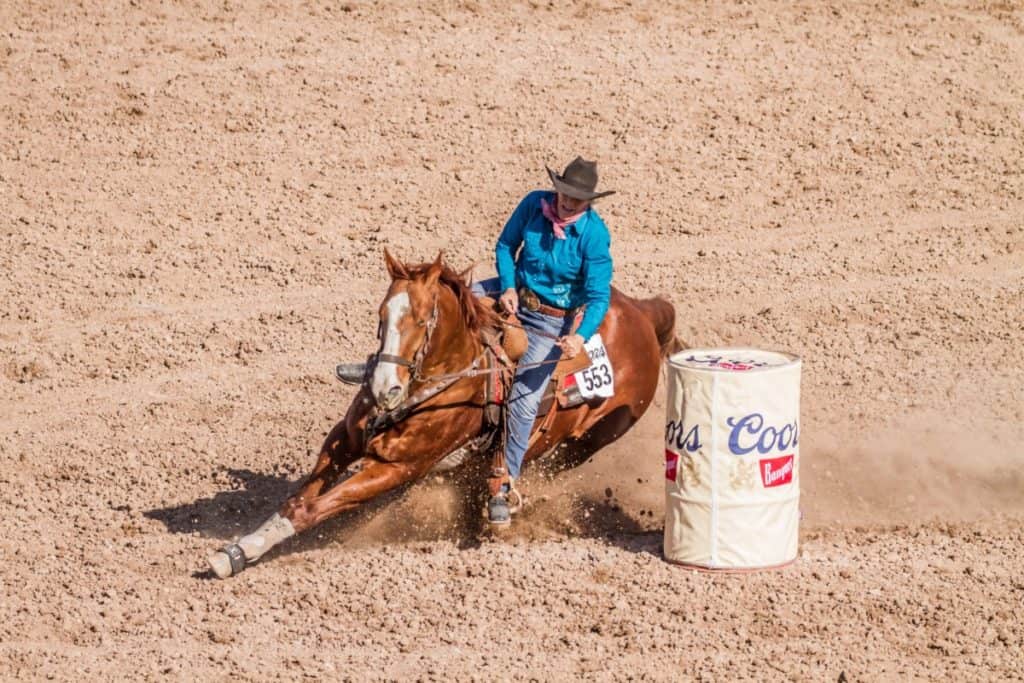
Other Disciplines
Team disciplines
Polo
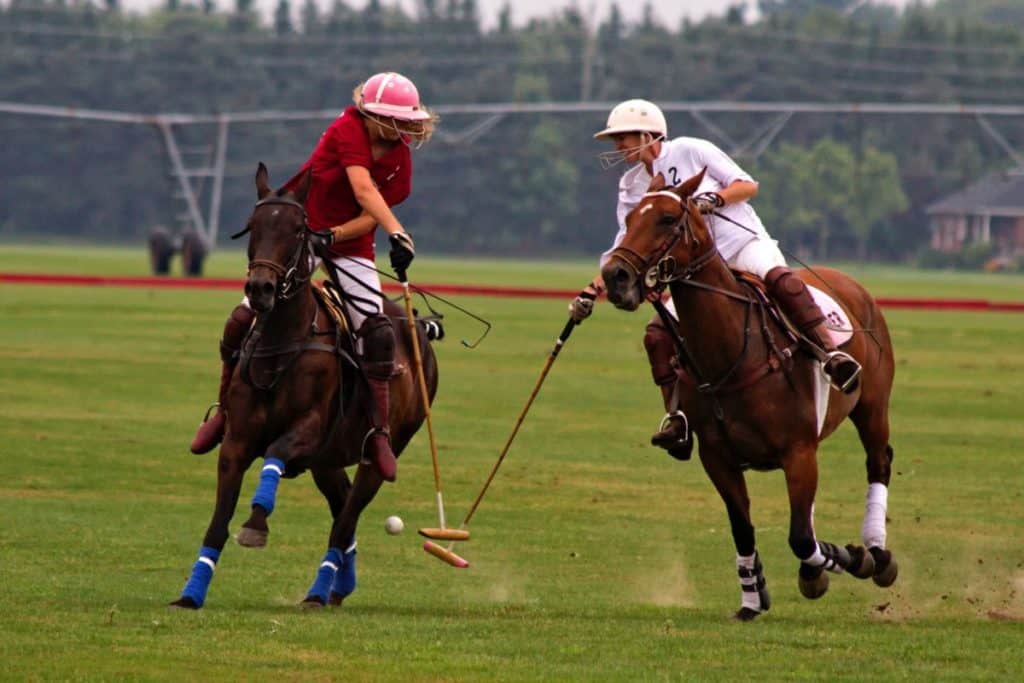
This is believed to be the oldest equestrian sport out there and is played between two teams of four players each. The game is played on a large grass field of 300 * 160 yards (274 * 146 meters) and is split into 7 ½ minute long ‘chukkers’. Depending on the location, a game will have anything from four to eight chukkers. During each chukkers, all riders will change for a ‘fresh’ horse, meaning that each rider needs to have as many horses available as the game has chukkers.
The players use mallets to drive a small wooden ball between the other team’s goalposts that are 8 yards (7.3 meters) apart. There is one off-court and two mounted umpire referees for each game. Polo is often regarded as a sport for the rich but is also accessible on the club level with arena polo as an option for beginners.
Horseball
Horseball is another equestrian sport played in teams of 4. However, in this game, the players pass the ball to each other and score by throwing it into a hoop somewhat like a basketball hoop, only larger and placed vertically instead of horizontally. Players can ‘tackle’ each other by using their horse’s weight to push the opponent out of the arena or try to steal the ball but only as long as they remain seated in the saddle while doing so. If the ball drops to the ground any player can pick it back up as long as they do so in the direction the game was headed when the ball dropped initially. The team with the highest amount of points wins.
Driving
Horse driving is basically an umbrella term for attaching a horse or an equine to a harness to pull a vehicle behind it. Horse driving is used in agriculture, for transportation purposes and is also a competitive equine discipline.
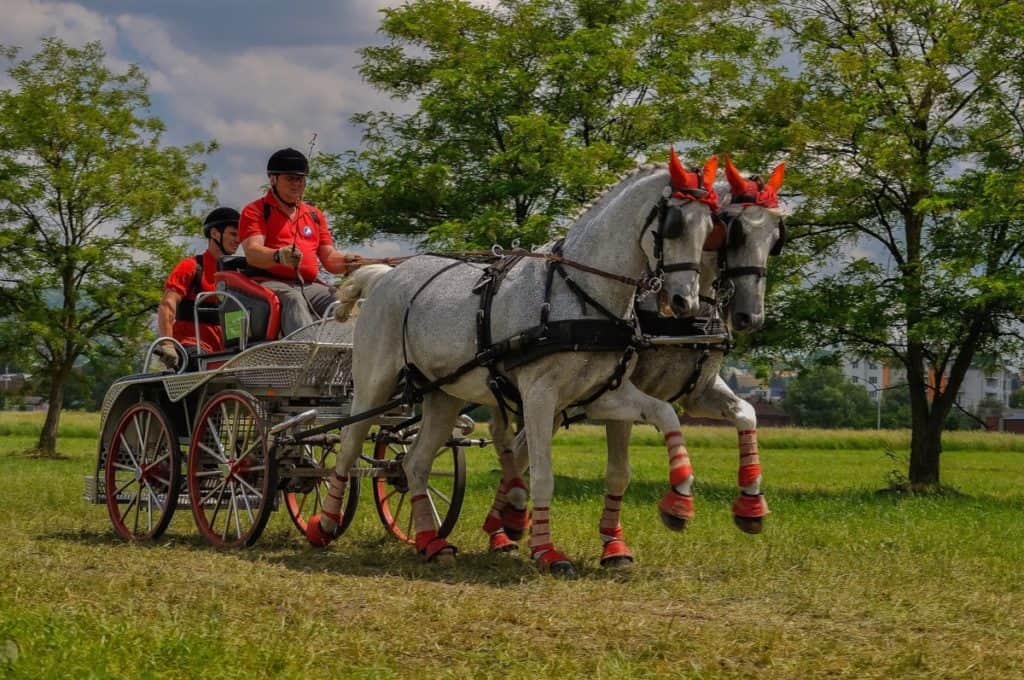
(Combined) Driving
This is the eventing of the horse driving world an is under FEI governance. Over three days, horses and drivers compete in the Dressage, Marathon, and Cones disciplines, together designed to test their partnership and stamina as well as the horse’s obedience and endurance.
Driven Dressage is essentially like classical dressage with a horse and carriage and where the suppleness and obedience of the horse is of utmost importance. The Marathon consists of a nature obstacle course which typically includes water, hills and hefty turns.
Finally, the Cones discipline demands the horse and driver navigate between several pairs of cones laid out on a course similar to how the obstacles in show jumping are. In the same way, as for eventing, the competitors rack up penalty points throughout the different disciplines and whomever with the lowest score wins the competition.
Para-equestrian Driving
This discipline is for drivers with reduced functional abilities and consists of drivers with a single horse completing the same events as in regular combined driving of dressage, marathon and obstacle driving.
Racing
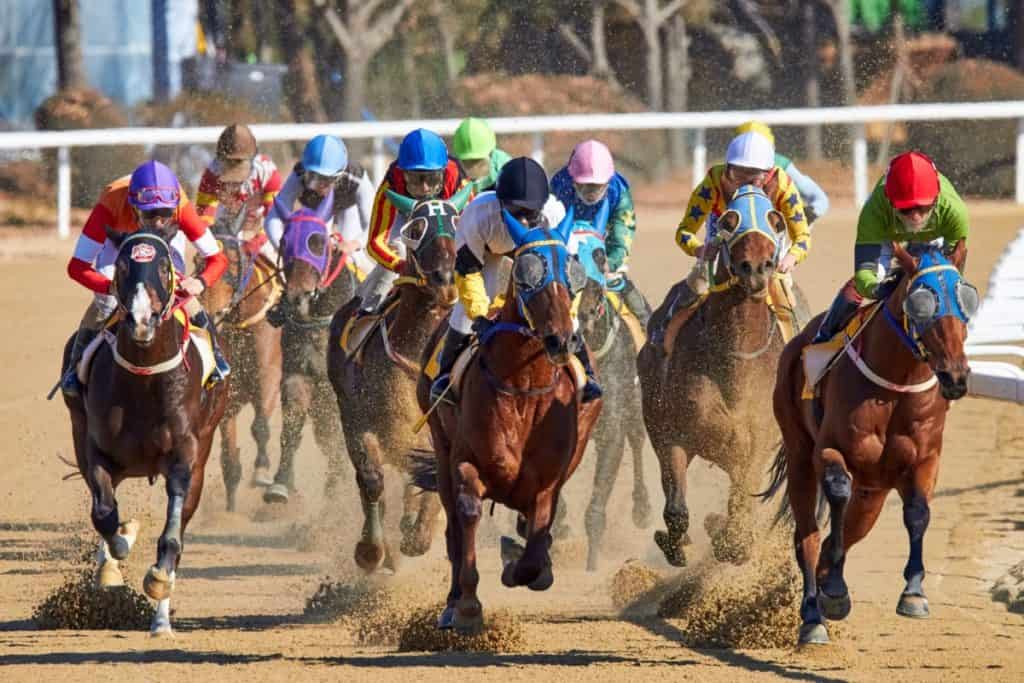
Horse racing in its most basic form is two or more horses competing to get from point A to point B as quickly as possible. This is one of the oldest equine sports around and is in many places associated with gambling as people bet on horses. The sport has many variations depending on location and traditions such as the gait, the types of horses, whether obstacles are incorporated and the type of surface the horses compete on. Racing faces sometimes stark criticism for being a dangerous sport that pushes both jockeys and horses beyond their limits, sometimes with fatal outcomes.
- Flat racing is galop races without obstacles where a jockey rides on the horse’s back around a flat and usually oval-shaped track. Some races are short and primarily tests the horse’s speed and explosive strength whereas others are longer and focus more on endurance. The typical range is 1-3 miles (1.6 – 4.8 km).
- Jump racing also referred to as National Hunt is similar to flat racing, however here horses need to jump over obstacles or hurdles or leap over water or ditch obstacles throughout the course.
- Harness racing happens exclusively in trot and the jockey is pulled in a sulky drawn behind the horse.
- Skijoring is primarily a competitive sport where a skier holds on to rope attached to a horse with or without a rider and is pulled along a track or field. The horses used are trained to accept the noise and movements created by the skier behind them.
Endurance Riding
Endurance riding is a long-distance race that tests the endurance and stamina of both horse and rider. Races are usually either 100 miles (160km), 50 miles (80km) or 25 miles (40km) long and divided into sections. The rider needs to adjust the pace throughout the course to get through it as fast as possible, but without tiring out the horse or exceeding the maximum heart rate levels allowed. There are strict veterinarian checks before, during and after the race to check the horse’s soundness, heart rate and hydration levels to make sure they and are fit to start or continue the competition. Horses are kept at the vet holds for a set period of time before they are allowed to continue. The winner of the race is usually the horse that first crosses the finish line and passes the final vet check.
Vaulting
Vaulting is an equestrian sport that combines gymnastics and dance on the back of a cantering horse. Vaulting can be both an individual and team sport and is governed by FEI. The horse is guided in a circle on a long rein while the vaulter or vaulters jump onto its back and do a series of gymnastic figures such as head and handstands, mounts and dismounts and lifting another vaulter while in motion. This sport requires incredible strength, stability, and balance from the vaulters and a harmonious horse with an even and comfortable gait. Below is a video showing professional vaulting programs in the 2016 FEI World Championship.
Gymkhana
This is a competition (usually for children on ponies) where a horse and rider will go through a collection of games or exercises laid out in a pattern in the shortest amount of time possible. Exercises can, for instance, be barrel racing, pole bending, picking up and putting down objects, the egg and spoon balancing game and so on. Gymkhana contestants often compete in teams and competitions are generally rather informal and mostly for fun.
You May Also Like…
This article is accurate and true to the best of the author’s knowledge. It is not meant to substitute diagnosis, prognosis, treatment or any type of medical advice for humans or horses. Animals exhibiting signs and symptoms of distress should be seen by a veterinarian immediately.
